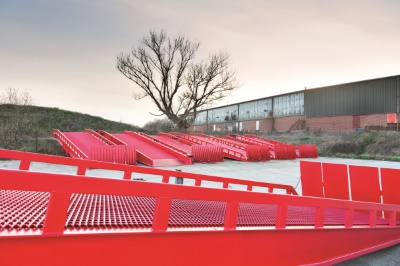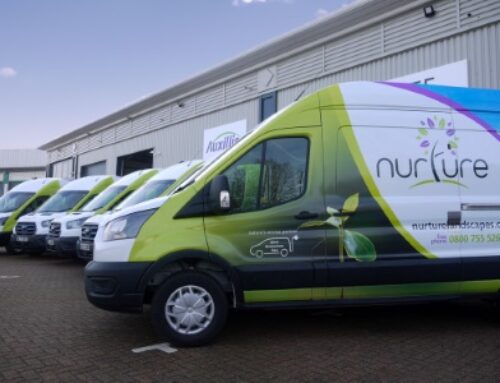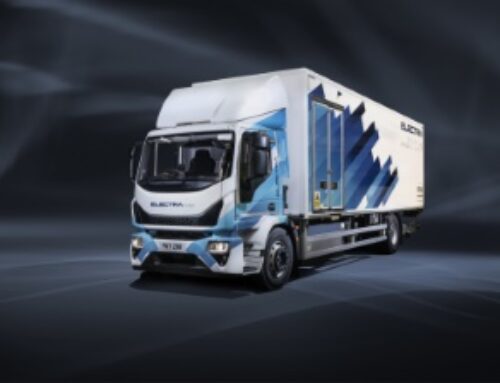Levelling up means loading up
 John Meale of Thorworld explains how the use of loading ramps can help businesses scale in a flexible and cost-effective way
John Meale of Thorworld explains how the use of loading ramps can help businesses scale in a flexible and cost-effective way
Times are tough. Between the impact of Covid-19, the pressures caused by the transition to Brexit, and rapid increases in energy and fuel costs caused by the war in Ukraine, it’s hard to find reasons to be happy.
Yet, in the logistics sector, things are looking up. A recent report by Frontier Economics, commissioned by Amazon and supported by Logistics UK, paints a largely positive picture of huge growth and opportunity.
Titled ‘The Impact of Logistics Sites in the UK,’ the report reflects on a decade in which over 600,000 logistic jobs have been added across the nation. Note that these roles are not linked geographically. By and large, the logistics sector creates more jobs than other sectors in the regions of the country that have been identified by the government as ‘levelling up’ priorities.
Around four in ten new logistics jobs since 2012 have been created in high priority areas, compared to only one in four in other industries. It’s having a snowball effect: according to the report, every 1,500 logistics workers support a further 1,000 jobs in the supply chain, service providers and other businesses in the local community.
There are obvious reasons for this growth. The pandemic has caused tremendous changes in consumer habits, contributing to the rapid growth of e-commerce and home delivery. To service this demand, logistics providers had to make significant investments, especially in terms of ‘final mile’ capabilities.
 The challenges of logistics growth
The challenges of logistics growth
It’s doubtful that the sector will revert to pre-pandemic practices. So, the common phrase “the world will never be the same again” can be safely applied to the logistics market. We are seeing a historic moment of industry transformation, which translates into a shift from the customer market to the service provider market. The availability of resources will determine the course of logistics development.
The growth of e-commerce is placing an emphasis on the convenience of online shopping, leaving local distribution centres in a race for speed and cost optimisation in the delivery of goods to customers. So, if you wait, you’ll be at the end of the list.
Before the pandemic, most warehouse and distribution centres were built only with loading bays and docks to accommodate containerised vehicles or large trailers. Goods were delivered to other distribution centres by similarly sized vehicles for onward delivery to local warehouses serving supermarkets and small local warehouses. With the demand for same day delivery, the distribution centres needed to adapt in order to have the option to deliver directly the end consumer.
Businesses need new, safe and efficient ways of loading and unloading goods. Of course, new loading bays designed for vans can be built in the long term. However, not only will it take time to install these, there will also be a cost. For operational reasons, loading bays and warehouses need to be able to adapt to accept and distribute goods from different modes of transport now, before the opportunity disappears.
 The benefits of using loading bay or van ramps
The benefits of using loading bay or van ramps
Loading dock ramps have proved their effectiveness over the past few years in allowing companies to scale up operations, or expand into van delivery. This classic design, which has proven its durability over the decades, is adapting to become a familiar sight even in the most modern logistics facilities, precisely because it is versatile enough to meet the rapidly changing opportunities in the sector.
We’re finding that Thorworld Van Ramps, platforms, and bespoke modular docks are perfect to load goods into delivery vans, with special all-weather surfaces and safety rails, while ensuring the safety of vehicle drivers during loading.
What’s particularly effective is the range of choice such solutions offer to the growing logistics provider. Yard ramps and van ramps can either be portable or fixed, plus you can benefit from a short-term rental for standard ramps or a bespoke permanent purchased solution.
With modular docks, for example, it is possible to configure sophisticated loading operations without the expense or disruption of a loading bay installation. We’ve recently installed our largest single bespoke modular dock, enabling seven loading dock positions from which the customer – a supermarket – can receive packaging returns.
There’s no better time to invest, while there is still time to take advantage of the UK Government’s Super-deduction scheme until the end of the programme in March 2023. This scheme is designed to increase domestic investment in the UK economy and allows the UK companies to recover 130 per cent of the cost of eligible purchases against their corporation tax bill.
Whatever the future holds for the government’s ‘levelling up’ initiative in the light of Boris Johnson’s resignation, it is clear from the recent report that, in logistics, levelling up is already happening. In order to sustain this growth and opportunity, and survive the challenges of the market, companies need to be quick, agile and effective in managing operations. There’s no better way of doing that than to consider the advantages of loading ramps and platforms.
More information about Thorworld Industries’ material handling capabilities is available at the company’s website.










